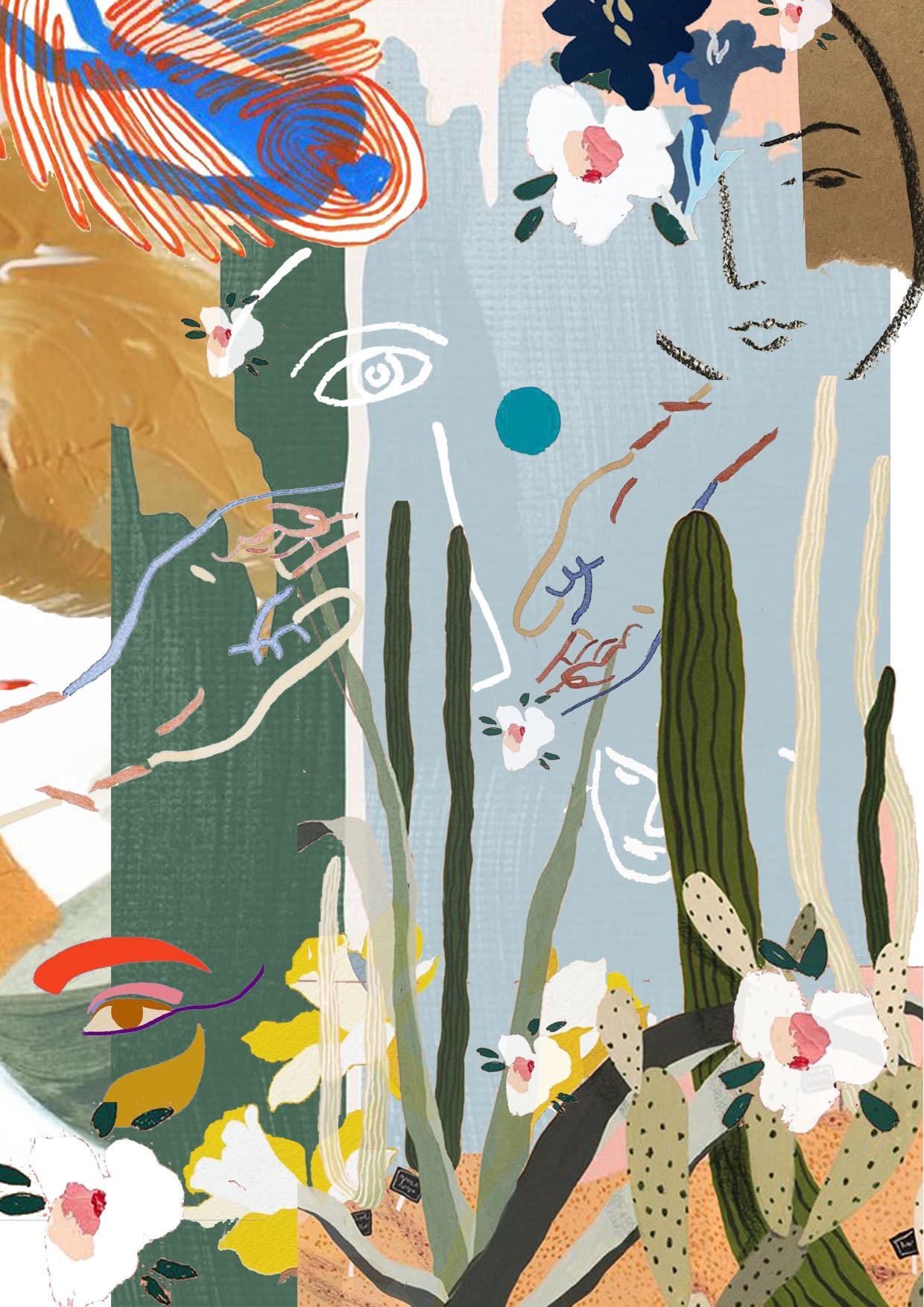Introduction
Collage Art is a creative practice that involves assembling diverse materials—such as photographs, magazine clippings, fabric, or found objects—onto a single surface to create a cohesive visual story. This dynamic and intuitive art form encourages exploration and self-expression, making it an accessible medium for people of all artistic skill levels.
Collage art has roots in early 20th-century avant-garde movements, where artists like Picasso and Braque used it as a way to challenge conventional artistic norms. Today, it’s celebrated as a versatile and transformative practice that fosters mindfulness, creativity, and connection with oneself and others.
The tactile process of cutting, layering, and arranging materials allows individuals to engage both their analytical and emotional minds, offering a powerful way to process feelings, find calm, and enhance creativity.

Benefits
Stress Relief
The hands-on, repetitive actions involved in creating a collage—such as cutting and gluing—naturally induce a sense of calm. The act of focusing on assembling materials distracts from stressors, providing a mental break and a meditative experience.Enhanced Self-Expression
Collage art allows for freeform expression without the pressure of traditional artistic skills. By choosing and arranging materials, individuals can communicate thoughts and emotions that may be hard to verbalize.Boosted Creativity
Combining diverse elements into a harmonious whole challenges the mind to think innovatively, enhancing creative problem-solving skills.Improved Sociability
Collaborative collage sessions encourage sharing ideas, materials, and stories, fostering a sense of community and improving interpersonal connections.Strengthened Relationships
Creating collages with others, such as family members or friends, opens pathways for meaningful conversations and shared experiences, deepening emotional bonds.
Steps to Practice
Gather Materials
Collect items that inspire you, such as magazines, newspapers, fabric scraps, or even natural elements like leaves and bark.Create a Comfortable Workspace
Set up a quiet, well-lit area where you can spread out your materials. Ensure you have glue, scissors, and a surface to work on.Set a Theme or Intention
Think about what you’d like to explore or express in your collage. Themes could include “calmness,” “gratitude,” or “personal growth.”Explore Freely
Allow yourself to experiment without judgment. Cut, layer, and rearrange materials as needed until you feel satisfied with the result.Reflect on Your Work
Once your collage is complete, take time to contemplate its meaning. Consider journaling about the emotions or memories it evokes.
What to Expect in a Session
Preparation and Setup
Collage art sessions begin with gathering materials like magazines, photographs, paper, fabric, and adhesives. Participants are often provided with a blank canvas or paper to start their creation.Setting an Intention
Before starting, participants are invited to reflect on what they’d like to explore—whether it’s a specific emotion, memory, or theme.The Creative Process
- Choosing Materials: Selecting images or textures that resonate with your current mood or goals.
- Arranging: Experimenting with placement, layering, and combinations to tell a story or create a pleasing composition.
- Finalizing: Gluing or fixing the pieces into place, allowing for adjustments as needed.
Reflection
After the collage is completed, participants take time to observe their work. Reflecting on why certain images or materials were chosen often provides insights into subconscious thoughts and emotions.Sharing
In group settings, participants may share their collages, explaining the meaning or story behind their creation. This process builds empathy and understanding among group members.
How This Approach Heals
Calmness
Collage art fosters a meditative state through its repetitive and tactile nature. The act of cutting, arranging, and gluing materials focuses the mind on the present moment, reducing anxiety and promoting relaxation.Building Relationships
Creating collages with others provides an opportunity for shared creativity and bonding. Whether collaborating on a single piece or working side by side, the experience encourages open communication and strengthens emotional connections.Self-Knowledge
The materials chosen and the stories told through collage often reflect inner thoughts and emotions. Over time, this process helps uncover subconscious patterns, fostering greater self-awareness and understanding.Improved Sociability
Group collage sessions encourage collaboration and the sharing of ideas, promoting a sense of community and improving interpersonal skills. The non-judgmental nature of collage art makes it an excellent medium for connecting with others.Stress Reduction
Engaging in collage art provides an outlet for releasing built-up tension. By channeling emotions into the creative process, individuals can experience a cathartic release, leaving them feeling lighter and more balanced.Work Productivity
The problem-solving skills developed through collage—such as finding harmony among diverse elements—translate into enhanced creativity and adaptability in professional settings. This practice also encourages a fresh perspective, making it easier to approach work challenges with renewed energy.
Long-Term Benefits
Emotional Resilience
Regular engagement with collage art builds the ability to process and regulate emotions, leading to greater emotional balance over time.Strengthened Communication Skills
The insights gained from self-expression through collage can improve your ability to articulate emotions and connect with others on a deeper level.Sustained Calmness
The sense of relaxation cultivated during collage sessions often extends beyond the creative process, reducing overall stress levels in daily life.Creative Confidence
The freedom to explore and combine materials nurtures creativity and builds confidence in your ability to think innovatively.Holistic Well-Being
By integrating mental, emotional, and sensory engagement, collage art offers a comprehensive approach to promoting overall health and balance.
